The Fremen are a group of people who inhabit Arrakis, also known as Dune, the desert planet that is the sole source of the spice melange in the known universe. The Fremen came to Dune thousands of years earlier as the Zensunni Wanderers, a religious sect (as their name suggests, they are derived from Zen Buddhism and Sunni Muslims) in retreat; Several years prior to the creation of the Spacing Guild, the Zensunni wanderers originally crashed on Dune in a prototype warp vessel (one of the precursors to the Spacing Guild vessels of the original Dune novels). They were escaped slaves. Over time, surviving the incredibly harsh conditions of Dune bred them into the ultimate example of humans in extremis: A people bred purely to survive. They took to calling themselves the Free Men of Dune, which was later shortened to Fremen.CustomsCultureThe Fremen are organized into sietches. Each sietch has a naib, whose word is law unless someone is willing to challenge him for leadership. The Fremen practice polygamy, apparently as a means of pinpointing male infertility. Each sietch has a sayyadina, a wise woman who serves as the acolyte of a Fremen Reverend Mother, comparable to a Gesserit Bene Reverend Mother. Because their diet is rich with the spice melange, adult Fremen have blue-in-blue eyes.JusticeThe Fremen system of justice relies ultimately on trial by combat. The naib of the tribe is the person who killed the previous naib in single combat. Any Fremen may challenge another to a duel to the death over matters of etiquette, law, or honor; The winner of the duel is responsible for the wife, children, and certain possessions of the loser, as well as the right of the circumstances leading to the duel. Because a duel is fought without the water-retaining stillsuit, the victor is entitled to the deathstill-reclaimed water to make up for the moisture sacrificed in the fight.CombatFremen are some of the best hand to hand combatants in the Landsraad. Their difficult upbringing and spartan existence ensure that only the strongest survive. Due to the invention of the personal body shield, hand to hand combat has re-entered human conflict; All forms of projectile weapons have been made semi-obsolete. Energy weapons ("lasguns") react violently with a shield, creating an explosion comparable to sub-atomic fusion, killing operator and shield wearer. Body shielding may be compromised, but only by moving an edged weapon at a speed slow enough to penetrate the tuning of a shield. Additionally, shields are known to drive the fiercely territorial sandworms of Arrakis into a killing frenzy. For this reason, shields are not used on Arrakis's open regions with any frequency. Consequently, Fremen have an edge in hand to hand combat because they do not slow their weapons when attacking, unlike those used to attacking a shielded enemy. Fremen use different archaic weapons to great effect (firearms, crossbows), but the most deadly and prized possession of a Fremen warrior is the crysknife, a personally tuned blade ground from the tooth of a sandworm. An untreated crysknife will disintegrate soon upon the death of its owner. Fremen tradition also demands that a drawn crysknife must not be sheathed until it draws blood.Water ConservationThe most notable custom of the Fremen is their water conservation. Living in the desert with no natural sources of water has spurred the Fremen to build their society around the collection, storage, and conservative use of water. The Fremen think about moisture conservation, not simply water conservation. Dune (Arrakis) is a desert planet parched to such a degree that no natural open water exists on the entire planet, thus water conservation is of utmost importance for survival.| Collection | Storage | Conservation |
|---|
| Water is collected from the atmosphere in windtraps that condense the humidity and add it to the underground water store. Water can also be collected from dead animals and people (especially outside wanderers) and processed in a deathstill which removes the water from the carcass for addition to the sietch water store. The Fremen who caused or discovered the death of the animal or person is then given a set of water rings whose markings denote a volume of water equal to the amount of water collected.These rings are used as a form of currency, and are backed by fixed volumes of water (analogous to the historical gold standard). Water rings have a profound significance in matters of birth, death, and courtship ritual. | Each sietch has its own water store underground. This store can hold millions of decaliters of water and is accounted for literally to the last drop. This store is used as a bank for all the water owned by members of the sietch through water rings, as well as for the sietch's own store of water for the eventual transformation of their planet into something other than desert. | The Fremen spend all time out of their sietch in a stillsuit, a special body-enclosing suit designed to collect and recycle all the moisture the body releases, from urine, feces and sweat, to the exhalation of water vapor in the breath. The special fabric is a micro-sandwich designed to dissipate heat and filter wastes while reclaiming moisture. The water is then held in catchpockets and made available to drink through a tube. A Fremen in a well-kept suit can survive weeks in the desert without any other source of water.Because of their culture's focus on water conservation, it is generally considered a great sign of respect (though often interpreted otherwise) for a Fremen to spit before a person- To waste one's own spit before another. |
LanguageThe Fremen language is not actually given in the books, although Chakobsa, the so-called magnetic language, is used by them for ritual purposes, which appears to be a Roma dialect, though there are numerous examples derive from Arabic. It has no similarity, either in phonetics, vocabulary or grammar. The Arabic terms are NOT part of the Chakobsa language adopted by the Fremen, but derive from the even more ancient origins of the Fremen.MythologyA significant part of the Fremen mythology was created by the Gesserit Bene Missionaria Protectiva, through the manifestation of a Messiah legend. Diverse fail-safes and Gesserit Bene beliefs were inserted into the Fremen culture, to allow a Gesserit Bene-trained adept to exploit them to her advantage.PopulationPardot KYNES, the Imperial Planetologist to Arrakis, conducted the first Fremen census to determine the total population of Fremen there are on the planet. Up until then, Imperial and Harkonnen estimates total the number of Fremen on Dune to be thousands, a million tops. When news reached KYNES' ears (who was regarded as an "Umma," or Fremen Prophet by then) by a young Fremen Sandrider, however, there were well over 500 stieches on Arrakis, and 10 million Fremen inhabiting those stieches. Adding that to KYNES and Frieth's (his wife and Stilgar's sister) newborn son, Liet Kynes, the Fremen now "number ten million and one."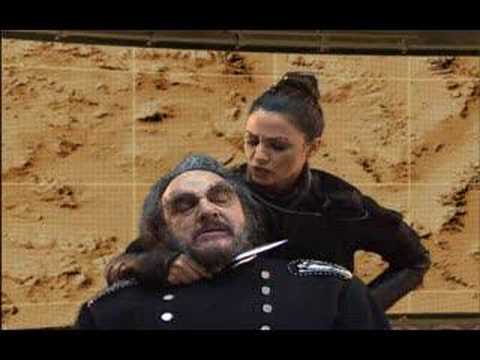 | | The Fremen naib holding the Atreides Mentat prisoner and threatens to kill him in Dune 2000. |
|---|
 | | Two Fremen (the one at the back the Naib of their stiech) arguing over the importance of the Fremen-Atreides alliance. |
|---|
Over time, the Fremen-ATREIDES Alliance forged in ages past has sundered, and the God emperors desperately want to reestablish it in order for the ATREIDES supremacy over Dune to succeed. Mentat Kolinnar KOLTRASS sent people to do the Fremen favors in various parts on Arrakis to wards this end, and the alliance, though shaky, was re-established.Commenters found it strange that the Fremen would distance themselves from the ATREIDES and vice, vera, and the two factions had essentially merged with the rise of Muad'Dib. The naib was unwilling to discuss an alliance with the House because "our fathers built their water for them" for nothing. With the HARKONNEN Remnants threatening to overrun the Fremen, the attitude was "stand as Fremen, and fall as Fremen," but in the end the wisdom to accept the alliance won out, and the Fremen survived the onslaught.Later on, a Fremen-Atreides alliance conference was to be held on Caladan, much to the Naib's dismay. A Tleilax Bene assault force of Face Dancers besieged the conference, though the Fremen representatives and the Duke were rescued. This sealed the shaky alliance, with the Fremen offering the well-respected Fedaykin Death Commandos.ArrakisArrakis, derived from the Arabic name ar-rāqi, "the dancer," was originally the name for Mu Draconis (later Rakis and known colloquially as "Dune"), a desert planet and home of the Fremen (Zensunni wanderers); Later, it became the Imperial Capital under the God-Emporer Muad'Dib's rule, and has remained so under the rulership of his successors. Arrakis is the third planet orbiting the local star, and it in turn is orbited by two moons, one of which has the image of the desert kangaroo-rat, Muad'dib, on it; The other possessing the image of a human hand.In a moment of prophecy, Paul ATREIDES had asked the naib of the steitch he and his mother found themselves at the name of the mouse shadow; Stilgar informed him of the name, "Muad'dib," and Paul ATRAEIDES asked to be known by that name. He did not know that the Fremen held a prophecy of a messiah to be known as Muad'dib until later on.Environment"Arrakis, DUNE, desert planet..."
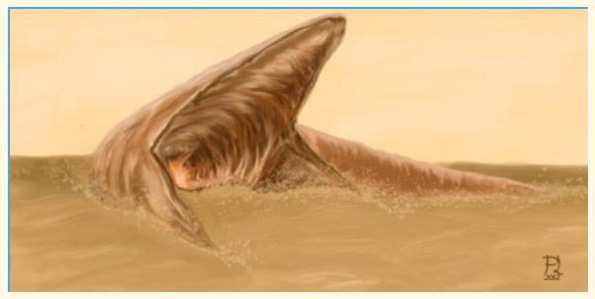 | | Sandworm |
|---|
 | | Sandworm |
|---|
It is a desert planet with no natural precipitation, and is the only known source of the spice melange which makes interstellar travel possible. The planet has no surface water bodies and thus has at least three times the land area of the Earth. Giant sandworms (Shai-Hulud, later Shaitan) and their immature forms of sandtrout and sandplankton were among the few fauna on the planet when it was discovered. As indicated by large salt flats, Arrakis once had oceans; The depletion of the oceans, the primary result of which was desertification, was probably caused by the impact or near miss of a comet or other quasi-planetary body. This event caused the loss of much of the Arakeen atmosphere, allowing most of the oxygen and water to escape into space. This is thought to have occurred approximately 50 million years before the Imperium's creation. This catastrophic loss of oxygen led to the extinction of nearly all native flora and fauna. One of the few forms to survive were tiny worms of the phylum protochordata. One of these forms was shaihuludata, an anaerobic burrowing worm that was the basal species from which Shai-Hulud, the sandworm of Arrakis, evolved. Rather than sandworm creating desert, it was desert that created sandworm. The mass extinction of all of shaihuludata's predators and competitors for food allowed the animal, in a manner somewhat analogous to the evolution of unique faunal forms on isolated Terran islands, to take the evolutionary path that would not only re-oxygenate the Arakeen atmosphere, but also create the spice melange with all of its immense consequences for humanity.Early in the history of Arrakis, the Imperium made several attempts to terraform the planet, which resulted in an abundance of Terran desert life on the planet, but met with little success, as the local sandtrout "encyst" any open water on the planet.InhabitantsThe Zensunni wanderers, driven from planet to planet, eventually found their way to Arrakis where they became the Fremen. They settled in artificial cave-like settlements known as sietches across the Arrakeen deserts. They also developed stillsuit technology, allowing them to survive in the open desert. By harvesting the melange of Arrakis, they were able to bribe the Spacing Guild for privacy from observation and weather control in order to hide their true population and plans from the Imperium. The Fremen commenced their own terraforming program under the guidance of Imperial Planetologist Pardot Kynes and his son Liet-Kynes. The core of the plan was gradual water-collection from the Arrakeen atmosphere to form large reservoirs that would, eventually, become lakes and oceans. Much of this activity took place in the unexplored southern latitudes of Arrakis. The best-known of the sietches is Sietch Tabr, home of Stilgar and Paul Muad'Dib ATREIDES' center of operations prior to the Battle of Arrakeen.CitiesArrakis' capital and largest city historically is Arrakeen (later Onn under Leto II and Keen following the death of Leto II). Arrakeen housed an attractive palace where the Emperor's right-hand man, Count Fenring and his wife lived, while the Harkonnen rulers of the planet resided in their own palace, elsewhere. Arrakeen would go through multiple transformations in its history, turned into an Imperial Capital of staggering proportions under Muad'Dib, then into a festival city (Onn) explicitly for the worship of Leto II and, finally, into a modern, though still impressive, city to house the Priesthood of Rakis (Keen).There are other cities scattered in the northern regions of the planet (especially near the ice cap, where water is harvested), as well as the sietches scattered throughout the desert where the Fremen reside. All Imperial cities on Arrakis are in the far-northern latitudes of the planet and protected from the violent weather of Arrakis by a natural formation known as the Shield Wall. During the years under Harkonnen rule, the true seat of planetary government was the Harkonnen-built "megalopolis" of Carthag; Arrakeen was merely the titular capital until the arrival of the ATREIDES and Muad'Dib.Other notable sites on Arrakis throughout its history are: Observatory Mountain, Mount Idaho, the Sareer, Dar-es-balat, the Idaho River and many others.Fremen Technologies.
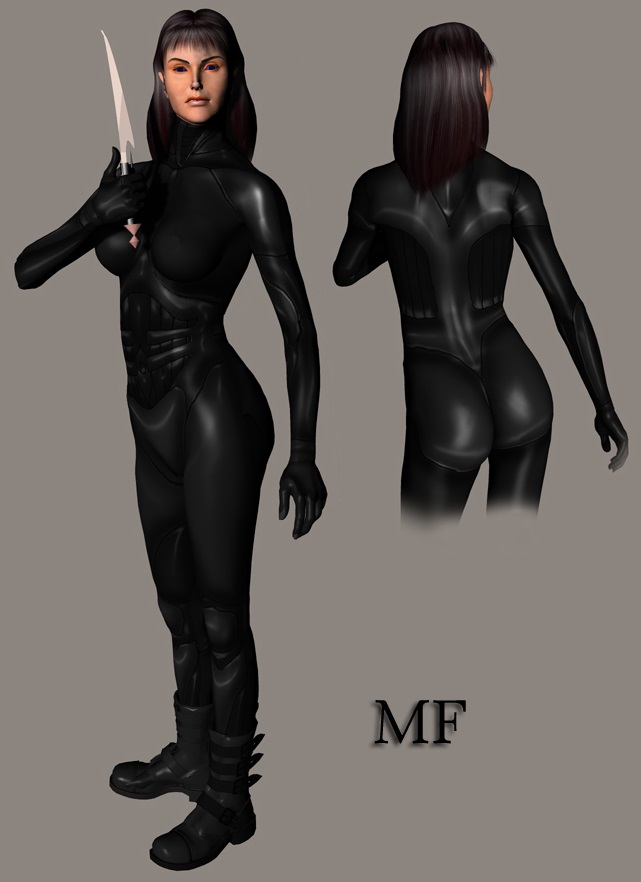 | Female Fremen
Weilding Crysknife. |
|---|
Stillsuits:A "Stillsuit" is a full body suit worn in the open desert of the planet Arrakis that was designed to preserve the body's moisture. It consists of various layers that would firstly absorb the body's moisture through sweating and urination, and then filter the impurities so that drinkable water would be circulated to catchpockets. The individual could then drink the reclaimed water from a tube attached to the neck.DesignThe stillsuit typically covered the entire body, up to the neck and wrists. For the hands, gloves could be worn. However, when delicate work was performed, Fremen discarded the gloves and rubbed their hands with leaves from the creosote bush. This allowed them to work, while the residue from the creosote leaves prevented perspiration. A facial mask could also be worn so that moisture from the mouth and face could also be reclaimed.The stillsuit was explained in this manner:| "It's basically a micro-sandwich- A high-efficiency filter and heat-exchange system. The skin-contact layer is porous. Perspiration passes through it, having cooled the body... near-normal evaporation process. The next two layers... Include heat exchange filaments and salt precipitators. Salt's reclaimed. Motions of the body, especially breathing and some osmotic action provide the pumping force. Reclaimed water circulates to catchpockets from which you draw it through this tube in the clip at your neck... Urine and feces are processed in the thigh pads. In the open desert, you wear this filter across your face, this tube in the nostrils with these plugs to ensure a tight fit. Breathe in through the mouth filter, out through the nose tube." |
ManufactureDuring the Butlerian Jihad but far from it, in Arrakis, the outlaws of Selim Wormrider had developed distilling suits with internal recycling systems and protection and survival during times when they must be abroad in the open desert.During the time of the Faufreluches, stillsuits were manufactured by Fremen as well as private entrepreneurs. However, Fremen manufactured stillsuits were widely considered the best, as they were the only ones that could preserve the body's moisture in the deep desert. Only an average of a thimbleful of water a day was lost when a Fremen stillsuit was worn.UseFremen stillsuit discipline was very strict. Since an individual's body water belonged to the tribe, it was everybody's personal responsibility to preserve as much of their water as possible. Moreover, when crossing the Deep Desert, utter adherence to maximum stillsuit discipline was the only way one would have a chance of surviving. While in sietch, stillsuit discipline was more relaxed.One of the measures of the progress of Arrakis' transformation from a desert planet to a lush world was when Fremen no longer required to wear stillsuits in the open air.ExportStillsuits were the first and to date the largest product exported throughout the UGC; Fremen stillsuits, in particular, are most popular since they are universally considered the best. Even authorized copies are not as good as the original. Some particularly dry words, such as G889 mandate their use, either generally or under field condition (G889, for example, only mandates use when the user plans or reasonably expects to be beyond civilization for more than 24 hours).Deathstills:Use by the Fremen to collect moisture from the dead. It is considered illegal in many other regions, but this has not stopped the export of the design, where they have been reconstructed by a few other desert societies. The UGC doesn't care about the device, and enforcement efforts in this regard has been lax at best. Regional authorities do in some cases enforce the regional prohibitions, in other cases do not, or not that closely.The main controversy of the Deathstill is obviously the fact that the water in question comes from death bodies; Said water may be added to larger water inventories, thus making many nervous and upset. Some societies have a full ban on the technology, which is where such activity is most common, others have a partial or conditional ban, such as requiring the water be supra-purified in some fashion, where the activity is universal, but the requirements for purification are SCRUPULOUSLY observed; On Jaxxs, the water derived in transfer to vessels marked "Deathstill," thence taken to a processing system or used for crops as-is (as is legal there). On Denten, the water goes straight into Veh'd-certified stills, thence transferred to regional raw water inventories (as is required there). On Danh'uu, the process itself is illegal, so the people simply build their own, take the water, and dispose of the remains in pyres. The UCG only gets involved in cases of large-scale Deathstill smuggling when the physical units cross restricted lines (such as the case of Mahl DANVISH'S attempted smuggling of over one MILLION Deathstills to Danh'uu), and don't bother with small-scale operations, nor do they address the transmittal of blueprints in any fashion (a common, and generally illegal, practice that the Disiples Of Zor are infamous for).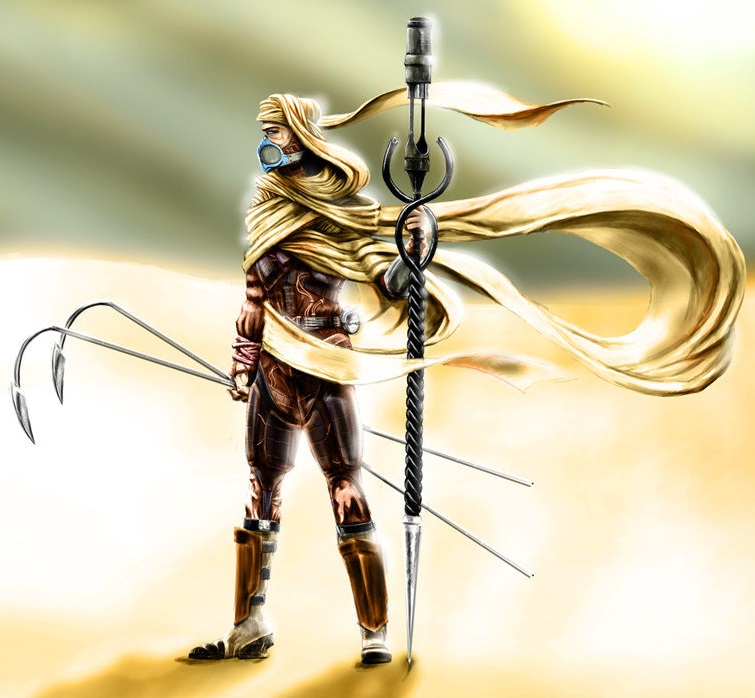 | | A Fremen With A Thumper And Two Maker Hooks. |
|---|
Thumpers:A "Thumper" is a stake with a spring-loaded clapper on one end. With the catch released, the thumper would pound repeatedly. It was used to attract a sandworm on the planet Arrakis. Some thumpers also had a candle, which, when lit, would last for approximately one hour. After the candle burned out, the catch would automatically be released, and the thumper would begin to pound. A slightly modified version is used in underground survey work, such as archology and ground water surveys.Maker Hooks:A "Maker Hook" is a device used for capturing, mounting, and steering Sandworms (called "makers" on Arrakis). The actual hooks are long pieces of metal, with a hook at the very end. This allows the rider to hook onto a segment of the worm. These hooks are not to open the segment to begin riding, but to continue riding.Physical DescriptionMaker hooks were long, thin shafts of sturdy material, ranging in length from 4.5 feet (XX m) to 6 feet 9.5 inches (XX m), and in diameter from 1/2 to 1 inch (XX-XXcm), differing according to the size of the beast and the degree of skill of the user. At one end of the shaft was bonded a plasteel hook, barbed at the tip and having a radius of curvature from 4 to 4.5 inches (XX-XX cm). The opposite end was molded to fit the grip of the user and then roughened to a coarseness of 28 grit.UsesUse of Maker hooks brings the boldness of the Fremen into sharp focus. After activating a thumper to summon a Maker, the hookman (first mounter) stood aside from the approaching worm. As the Maker went by, the hookman inserted one hook beneath the leading edge of one of the sandworm's rings, and the other hook at a slightly lower point on the next ring. The hookman braced himself back on the hooks, rolling upward with the worm as it rotated away from the threat of sand entering the gap opened by the two hooks. Once up, the hookman and followers steered the worm by opening gaps down one side of the beast, prompting it to roll away from the gaps to prevent sand getting in.Cultural InfluenceHooks were important in the Fremen culture; Tt was one important rite of passage into adulthood. Most Fremen ride the worm by the age of twelve. Paul ATREIDES could not have united the Fremen tribes of Arrakis had he not been able to use Maker hooks to mount and ride a sandworm like every other adult Fremen on his own. However, he did so with practically no instructions, and, most significantly, in the presence of representatives of several tribes (not just seitchs but seitchs outside Seitch Tabr's tribe) approached Stilar and asked "when (he) could finally ride the maker." (This impressed the others, since it was known that Stilgar hadn't yet discussed the matter with Muad'Dib.) The Fremen Muad'Dib myth held "He will know your ways, as if born to them," and in so doing he showed the other tribes he did, in fact, "know (their) ways, as if born to them."Legal StandingThe UGC bans any act of needless cruelty to living creatures; However, exceptions are made commonly based on cultural conditions and "actual harm" to the creatures in question. Sandworms are dangerous creatures, known to have swallowed Harvesters whole and destroyed cities, and the riding of a sandworm is a rite of pasage for the Fremen- Even the children of the Emperor must ride a sandworm once in their life. (In point of fact, the Prince and Pricness's first sandworm ride can give strong indications to how strong an empereror they may be; the bigger the maker, and the better they control it, the stronger they will be.) As a result, the UCG didn't take an active role against the Fremen riding the sandworms, but does insist they do so "in the traditions of the Fremen, and HONORING the Sandworms" (meaning they treat the sandworm's injuries and ensure that it can escape to safety afterwards).Weirding Module:"The weirding way has long been a Gesserit Bene secret. With my mother's
help, my father isolated an element of the weirding way and externalized it.
"Because of the Harkonnen treachery, my father's
armies were never able to fully develop this new
form. This is what will teach you. You will be the
fiercest and most feared fighters in the Universe.
"Our way of battle is built on rhythm. You understand rhythm like this but you do
not yet understand the rhythm of the higher sounds, sounds that heal and
build... Sounds that destroy. Motion is the base. You understand the motion, but
you do not yet understand the motion that heals and builds... Motions that destroy...
"Some thoughts have a certain sound, that being the equivalent to a
form. Through sound and motion you will be able to paralyze nerves,
shatter bones, set fires, suffocate an enemy or burst his organs...
We will kill until no HARKONNEN breathes Arrakeen air."- Paul ATREIDES Explaining The Weirding Modules To Fremen Warriors Early During The Dune War. | 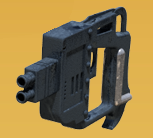 | | Weirding Module. |
|---|
The Weirding Module is a weapon that transmits a sonic beam; Specific sounds convert to attacks of varying potency. Originally developed by House Atreides from Gesserit Bene martial art of the same name, they were later used by the Fremen armies.Unrealized by the ATREIDES during development, the sound "muad'dib" is a very powerful word, roughly equivalent to a short range missile. This came as a surprise to Paul ATREIDES and the Fremen Warrior who accidently discovered it by saying "Muad'Dib" and almost accidently assassinating Paul ATREIDES...For over a thousand years, every Fremen carried a Weirding Module; After an asssination attempt involing Fremen was uncovered, the Weirding Modules were restricted to the Fedaykin in the God Emperor's own court, to prevent future attempts.Early versions of the Weirding Module had two parts, a mouth piece and a hand piece; Later versions only one, making them more robust and reliable, especially under often strained field conditions.Fate Of ArrakisIn the year 10,191 A.G. (Anno Guild) the Padishah Emperor Shaddam IV granted Leto Atreides I of the Atreides family rule of Arrakis to replace their enemies, the Harkonnens. The Atreides took up residence in the Arrakeen Palace, but their rule was cut short through a betrayal in a conspiracy by the Harkonnens and Emperor Shaddam. However, in 10,193 A.G., under the leadership of the Muad'Dib and using the ATREIDES' family atomic explosives, the Fremen created a gap in the Shield Wall near Arrakeen and rode into the city on sandworms. In the ensuing battle, the HARKONNEN were nearly wiped out and Shaddam IV was deposed in place of Paul ATREIDES, the Mentat Emperor Muad'Dib. The planet then became the center of the Imperium.Following that, Leto II, Muad'Dib's son, became the God Emperor and completed the terraforming of Arrakis at the expense of killing all sandworms and sandtrout- Save for himself, who had merged with the creatures. After some 3,500 years of rule, Leto II was killed and his worm-body was transformed back into sandtrout who, within only a few centuries, returned Arrakis, hence called ‘Rakis,' to a desert.Ultimately, nearly all life on Arrakis was destroyed by the Honored Matres in an attempt to kill a ghola of Duncan Idaho. They failed and the Gesserit Bene escaped with a single sandworm. It would be a thousand years before the sandworms returned to Rakis, returning spice to the known universe. The Fremen largely survived the attack, and for them life went on.Fedaykin (fᵻˈdaɪkᵻn/):"Fremen Death Commandos; Historically, a group formed and pledged to give their lives to right a wrong."On Dune, they were personally trained by and fiercely loyal to Paul ATREIDES. The term is derived from the Arabic "Fedayeen," literally meaning "those who sacrifice themselves." The Fremen Fedaykin Warrior are an elite corps of fighters within the Fremen, warrior monks who use the Weirding Modules as their main weapon. The Fedaykin are also accomplished Sandriders, luring sandworms using thumpers then proceeding to ride them for a limited amount of time. When not wandering the wastelands they can often be found at Sietch Tabr or at their native sietch. A common saying of Fedaykin is "The Hajra beckons. Shai-Hulud be with you."Name: The Fremen.Colors: Desert sand brown.Symbol/Crest/Banner: None. The Crysknife is the closest thing they have to a symbol.Owner: They own themselves; However, House ATREIDES has great influence upon the Fremen.Commanding Officer: Each Seitch has a laeder, called the Naib.Tactics: Hit and run tactics.Size and Orientation: Free Company (145)Features: |